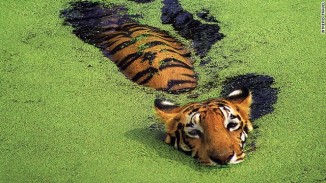Possibly northern Borneo’s last remaining rhino has been captured and will be now used for a captive breeding programme to try to save the species from extinction.
The Borneo Rhino Alliance (BORA) and Sabah Wildlife Department had known about the female’s presence in the rainforests of the Danum Valley in Malaysia’s northern state of Sabah through camera trap monitoring; however there have been no signs of any other wild rhinos in the rest of the state.
According to Dr Sen Nathan, Assistant Director / Chief Veterinarian of Sabah Wildlife Department, on Monday 10 March the rhino fell into a purpose built pit trap dug at a site on a well-known rhino trail, and has reportedly suffered no injury. Research has shown that pit traps cushioned with vegetation are the safest way of capturing Sumatran rhinos. Efforts to capture the female were stepped up last year following approval from the State Cabinet.
The female rhino will shortly be translocated to Tabin Wildlife Reserve, where it is hoped that she will breed with the Sanctuary’s last remaining Sumatran male rhino Kretam, known as Tam, who was captured in August 2008, when he was roughly 20 years old. Or the female rhino may be used in wider global Sumatran rhino breeding efforts. This is dependent on the captured female being cyst-free and reproductively healthy and fertile.
Read more Lone Sumatran rhino caught in Sabah.



